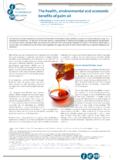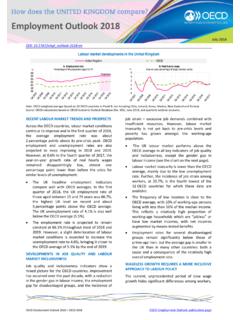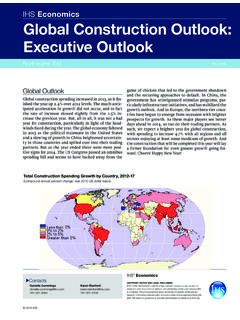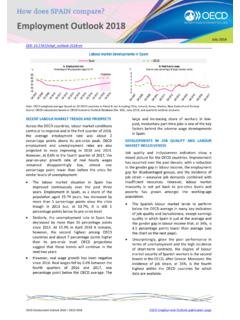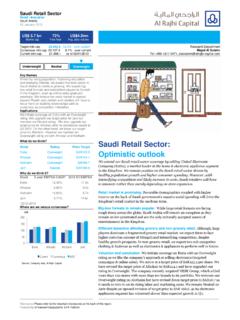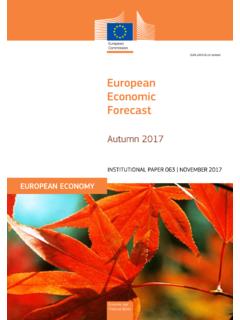Transcription of The Tax Burden of EU - Institut économique Molinari
1 Institut conomique Molinari , Paris Bruxelles The Tax Burden of Typical Workers in the EU 28 2016 James Rogers | C cile Philippe TABLE OF CONTENTS Abstract 2 Background 2 Main Results 3 On average, a respite for workers from ever rising 3 ..while prevalence of hidden tax contributions grows 3 Noteworthy in 2016 3 Flat taxes: Higher rates for Europe s poorest workers 4 Outlook 6 Definitions and Methodology 6 2016 Tax Liberation Day Calendar 7 Data Summary 8 Research Notes 9 About the authors / Contact 10 Appendix: Employer Cost of 1 net 11 The Tax Burden of Typical Workers in the EU 28 01 James Rogers and C cile Philippe, July 2016 Tax calculations provided by ABSTRACT The purpose of this study is to compare the tax and social security burdens of individual employees earning typical salaries in each of the 28 member states of the European Union and, in doing so.
2 To determine a tax liberation day measuring how much of each year s work is devoted to paying taxes for workers in each country. In addition, the study tracks year to year trends in both the taxation on, and cost of salaried labour in the EU 28. Background Numerous studies rank political systems by various measures of economic freedom . While valuable to economists, the aggregate data in these studies fail to shed light on the working individual s role in financing their state and social security. In addition, many organizations determine an annual tax freedom day for their countries.
3 Unfortunately, conflicting approaches to this calculation make cross border comparisons difficult. This study aims to create an apples to apples comparison of tax rates, with data that reflect the reality experienced by real, working people in the European Union. Finally, it serves as a guide to the true cost of hiring employees in each member state. The Tax Burden of Typical Workers in the EU 28 02 James Rogers and C cile Philippe, July 2016 MAIN RESULTS On average, a respite for workers from ever rising For the second time in the six years since this study was first published, typical workers in the European Union see their average real tax rate dip slightly ( )
4 This year, from to Still, workers taxes remain nearly 1% higher than in 2010, due in large part to VAT increases in 20 of the 28 member states during this period..while prevalence of hidden tax contributions grows Employer contributions to social security, which are paid on top of gross salaries and do not appear on most workers payslips, now represent of all payroll taxes collected in the EU. Belgium has substantially reduced this rate in 2016, but other countries have increased their use of this invisible tax to the extent that the aggregate EU figure increased by over the past two years.
5 Noteworthy in 2015 France has displaced Belgium as the EU member state that taxes labour at the highest rate. of the cost of a salary goes to the government there, making the French worker s tax liberation day the 29th of July. While some French social contributions decreased (family allowances), others increased (sickness, old age, transport), and the percentage paid in income tax rose slightly (due to the increase in the average wage); consequently, the France s date is the same as in 2015. The Tax Burden of Typical Workers in the EU 28 03 James Rogers and C cile Philippe, July 2016 Real tax rate for typical workers in the EU 28 Following this study s methodology, the tax shift enacted by Charles Michel s government in Belgium has reduced the real tax rate for Belgian workers from to , accelerating the arrival of Belgian workers Tax Liberation Day by nine days to July 27th.
6 Unfortunately, concurrent increases in the taxes on electricity (from 6% to 21%), diesel fuel, and alcohol will result in little or no extra cash in typical workers pockets. The outlook is bright, however, as a series of personal income tax cuts are expected to be phased in over the next three years. Broad cuts in personal income tax rates went into effect in Austria in 2016, saving the country s workers from becoming the highest taxed in the EU 28. The result of the new rates: Austrians are working 15 days less to pay their taxes than last year. The Tax Liberation Day in Greece (7 July) is 24 days later than in 2010 (13 June).
7 Salaries have dropped as taxes have risen, such that a typical Greek worker s take home pay has dropped nearly 20%, (approximately 3,150 ) during this period. Since 2009, 20 of the 28 EU members have raised VAT rates. In 2016, however, there were no VAT rate changes except in Romania, where the standard VAT rate was cut from 24% to 20%; the new rate is still higher than the (19%) rate when this study was first published in 2009. Flat taxes: Higher rates for Europe s poorest workers The gap widens this year: Europe s governments with flat tax policies continue to tax workers at higher rates than those in progressive tax countries.
8 Six member states all among the EU s ten poorest have flat tax policies. The Tax Burden of Typical Workers in the EU 28 04 James Rogers and C cile Philippe, July 2016 EU Average Real Tax Rates, 2010 2016 Generally, flat tax policies impose a fixed rate on income tax, the lowest being 10% in Bulgaria. Social security contribution rates in these countries are higher than in progressive systems on average, social contributions make up 72% of payroll taxes collected in flat tax countries.
9 (Not that the flat income tax rates are lower, either: Of the 10 countries assessing the lowest income tax rates on workers, 8 have progressive income tax systems.) In addition, 5 of the EU s 6 flat tax countries (all except Bulgaria) have raised VAT rates since 2009, with Hungary implementing two increases totalling 7%. The Tax Burden of Typical Workers in the EU 28 05 James Rogers and C cile Philippe, July 2016 OUTLOOK Higher pension and health care expenditures are among the primary effects of the ageing of Europe s population, and there are fewer workers to pay for these costs; only of EU citizens were in the labour force in 20151, an increase from the previous year but down 1% since the first edition of this study was released in 2010.
10 Consequently, budget cuts and economic growth remain workers best hopes against tax increases in the near term. DEFINITIONS AND METHODOLOGY The following terms are used in this study: Real Gross Salary represents the total cost of employing an individual, including social security contributions made on top of an employee s salary. Real Net Salary is the bottom line figure: How much cash a worker has left over to spend that will not be paid to the state (other additional taxes such as those on petrol, airline tickets and alcohol are not considered in this study). An individual s Real Tax Rate is: Social Security Contributions + Income Tax + VAT Real Gross Salary This percentage of 365 determines the Tax Liberation Day, the calendar date on which an employee (beginning work, in theory, on January 1st), would earn enough to pay his annual tax Burden .

